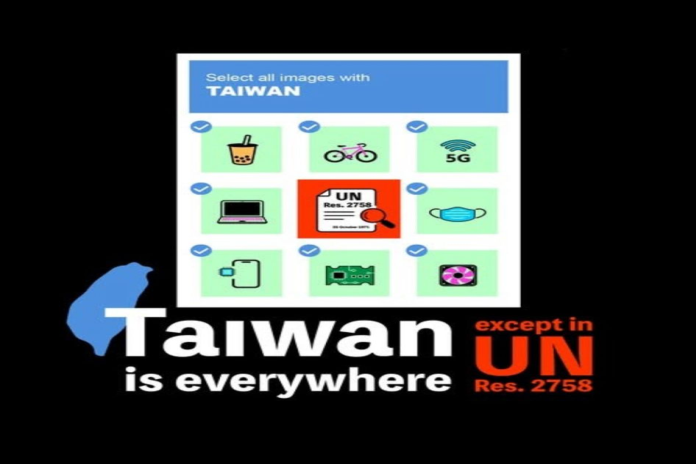By Daya Kishan Thussu
Western concerns about Chinese digital dominance
China’s unprecedented expansion and penetration of the global digital domain has generated much anxiety, especially in the US and its democratic allies about a one-party state influencing the global agenda in the internet age. Commentators accuse China of ‘exporting digital systems that make authoritarianism more effective than ever’ (Beckley, Citation2022). Others have argued that beyond technological domination in the global South, as a ‘sentinel state’ China poses serious security threats to the world at large and emphasised the need for ‘decoupling’ with China (Pei, Citation2024).
However, given the economic and technological prowess of China, the US and its European allies now speak of ‘friend-shoring’ to reduce China’s role in strategically important supply chains, while still recognising the reliance on China’s lucrative market and thus settling for ‘de-risking’ rather than ‘decoupling’ from China (Cave, Citation2023). Some have advocated ‘weaponization’ of US ‘digital trade relationships to create a system that promotes its preference for internet governance’, forcing countries to choose between maintaining access to their markets in what has been described as ‘democratic digital supply chain’, or embracing China’s authoritarian model (Knake, Citation2020, p. 1 and 2).
Some Commonwealth countries have other security-related fears. Canada is concerned about the ‘polar silk road’: in 2021, China announced its intention to construct a ‘polar silk road’ – to extend its BRI project and participate in the development of Arctic shipping routes (Doshi, Dale-Huang, et al., Citation2021). Despite being a non-Arctic state, China became an observer member of the Arctic Council in 2013, and its presence is increasing in the resource-rich region with huge potential for exploration as ‘longer periods of an ice-free Arctic make the Arctic attractive’ (Nilsson & Christensen, Citation2019, p. 5).
Beyond the West, other countries notably India, also share security apprehensions vis-à-vis China with which it has a long-standing border dispute – which led to a fatal confrontation between the two armies in 2020, and brought the relationship to its lowest point in recent decades. New Delhi opposes the BRI and views it as a project to realise the ‘geopolitical, geo-economic and geostrategic ambitions’ of China (Lele & Roy, Citation2019, p. 56). Particularly problematic is the fact that parts of the China-Pakistan Economic Corridor (CPEC) cross the disputed border between the two Asian giants. For its part, China sees India as a potential threat to its claim to be the leader of the global South.
India’s presidency of the G-20 in 2023 was an opportunity that the government of prime minister Narendra Modi used to the fullest to re-establish its credentials as an articulate voice of the global South, with India’s long tradition of pursuing a ‘non-aligned’ foreign policy. A virtual summit, the ‘Voice of the Global South’, was held in New Delhi in January 2023, attended by representatives from 125 countries. Providing further impetus to these key processes of amplifying the voice of the global South, India ensured that the African Union was given full membership of the G-20 at the summit in September 2023 in New Delhi.
Many of China’s eastern neighbours, especially the countries around the South China Sea, are also concerned about its geopolitical ambitions. Such US-led security partnerships as the Quad (Quadrilateral Security Dialogue), which includes Australia, India, and Japan, as well as the AUKUS (Australia-UK-US), have emerged as anti-China groupings in the Indo-Pacific region.
Amid all this geopolitical tension, China continues to invest in promoting its overseas policies through its state media. Such targeted messaging, notes an Atlantic Council report, helps China to legitimise its ‘discourse power’, which it sees ‘as essential for reshaping the international environment in a way that better facilitates the expression of Chinese power’ and, in the long run, ‘makes the soil fertile globally for their message to seed’ (Thibaut, Citation2022, p. 3). Despite these setbacks, Chinese diplomats have been using X (formerly Twitter) – as part of the strategy of ‘talking back’ – in what has been termed as ‘Wolf Warrior’ diplomacy (Dai & Luqiu, Citation2024; Martin, Citation2021).
These propagandists have also used clickbait to enhance the visibility of Chinese narratives, often deploying platforms such as Facebook and X, which, ironically, are banned in the country (Lu & Pan, Citation2021). Some have cautioned about the globalisation of a ‘surveillance state’ using its technological prowess to control information and to shape as well as monitor discourse (Chin & Lin, Citation2022).
The US sees the digital silk road as a force multiplier for Beijing’s espionage capabilities and that it enables the Chinese government to seize an enormous amount of personal data, business information, and both government and military intelligence and exploit this for geopolitical ends. In June 2021, president Biden signed an Executive Order to prohibit US investment in China’s ‘military-industrial complex’ – the use of Chinese surveillance technology outside China, as well as the development or use of Chinese surveillance technology, to facilitate repression or serious human rights abuses constitute unusual and extraordinary threats.
Britain’s 2021 ‘Integrated Military Review’ echoes similar concerns: ‘Long established techniques of influence and leverage, such as economic coercion, propaganda, intellectual property theft and espionage, have been supercharged by ubiquitous information and technological transformation … As we become increasingly challenged below the threshold of open warfare, the battle of the narratives and use of non-lethal means to influence and secure objectives will characterise the future operating environment’ (Ministry of Defence, Citation2021, p. 5).
China, Trump 2.0 and the global South
The election in November 2024 of Donald Trump as the president of the United States for a second term has raised concerns in China about the escalation of trade-related disputes between the world’s two biggest economies. Although the Chinese economy has been growing at much slower rate than before, it remains one of the most important global actors geopolitically as well as geoeconomically. As tensions rise with the West, such Chinese initiatives as the BRI are likely to expand and deepen their engagement with the global South. An EU-supported study reported that, ‘most regions in the world hold a rather positive view’ of BRI, and ‘Central Asia and sub-Saharan Africa display [the] most positive’ (García-Herrero & Schindowski, Citation2023, p. 16).
Chinese foreign policy elites and the official media now speak about the ‘Belt and Road Cooperation’ instead of ‘Belt and Road Initiative’. The ‘Global Development Initiative’ is particularly relevant at a time when Western governments are cutting back on foreign aid while Trump 2.0 administration has announced a freeze on foreign aid and dismantled USAID, the premier global organisation for development aid.
This gives China an unprecedented opportunity to further strengthen its presence in the global South. China’s aid projects reflect the changing geopolitics of aid, investment and South–South cooperation also demonstrating the limitations of the Western developmental model, according to which industrial nations would be the shining example for poorer countries; as one commentator noted, ‘Globalization has almost dissolved the established North-South scheme’ (Kothari et al., Citation2019, p. xiii and xiv). Globalized economies such as China have begun to assert themselves as humanitarian and peacebuilding actors, producing ‘new or emancipatory modalities’ of ‘development’, especially in the context of Africa (Power, Citation2019).
The biggest challenge to Western hegemony in the developmental field has emerged from China’s success in exporting its developmental model to other parts of the world, including many Commonwealth countries and how this cooperation is transforming a large section of the global South. Developmental geopolitics has emerged as an intellectual project in China, especially since the launch of the BRI (Cheng & Liu, Citation2021). As the biggest aid provider, China has been instrumental in unleashing the structural transformation underway in many parts of the global South, partly because of growing South–South development aid and cooperation, although this is not without its drawbacks.
A 2021 study of international development finance from China, which examined more than 13,000 projects worth US$843 billion across 165 countries over an 18-year period, found that with annual international development finance commitments of US$85 billion a year, China outspends the US and other major powers on a 2-to-1 basis or more. It noted instances of debt trap and found that 35% of the BRI infrastructure projects have encountered major implementation problems (Malik et al., Citation2021). Although China’s public diplomacy is geared to presenting itself as ‘a muscular and commercially savvy lender to the developing world’, the terms and conditions of its lending remain obscure, and the contracts contain confidentiality clauses that obscure borrowers from revealing the terms or, in some cases, even the existence of the debt (Gelpern et al., Citation2021).
Daya Kishan Thussu is with the Hong Kong Baptist University, SAR, China.
[This is an excerpt from an article in The Round Table: The Commonwealth Journal of International Affairs and Policy Studies.]





